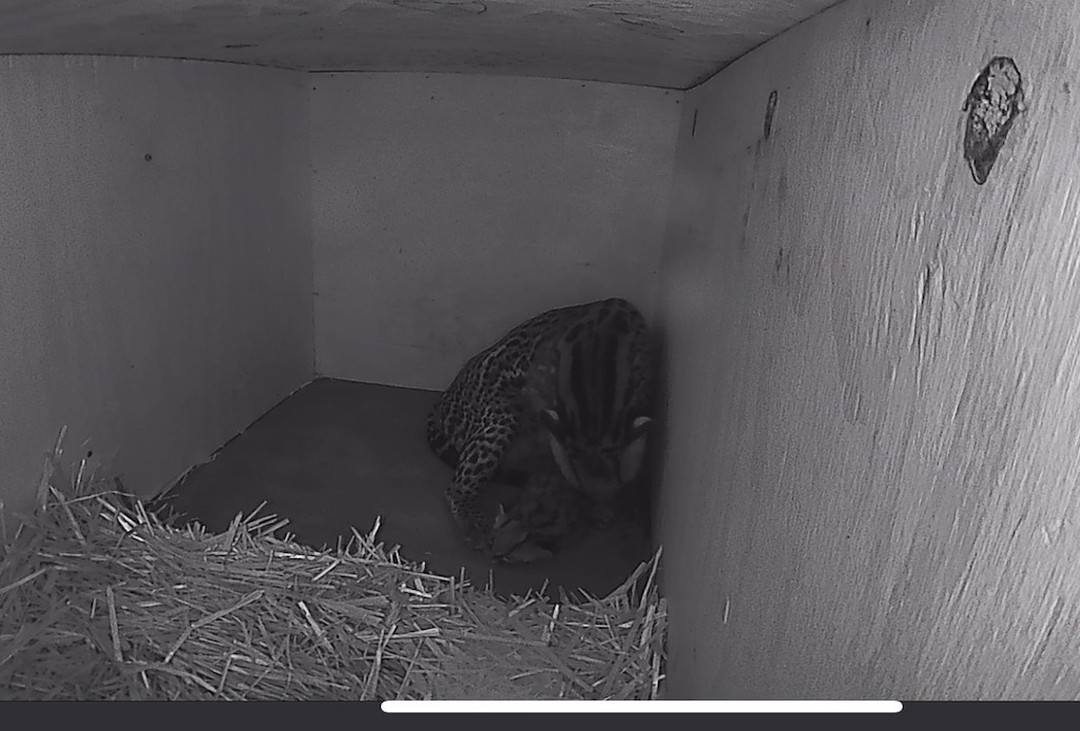- The birth of an ocelot kitten in the Desert Dome highlights the intricacies of zoo management and conservation efforts.
- The use of hormone tracking through fecal analysis plays a critical role in the breeding success of solitary species like the ocelot.
- Maternal behavior in ocelots demonstrates essential aspects of animal care and development in captivity.
- Early health assessments and vaccinations are crucial for the well-being and survival of zoo-born animals.
- Engagement and education efforts in zoos contribute significantly to wildlife conservation and public awareness.
In May, an ocelot kitten was born in the Desert Dome, marking a significant milestone in our ongoing efforts to support wildlife conservation and education. This event is the culmination of months of detailed planning and collaboration among our animal care and reproductive sciences team. Their commitment underscores the sophisticated techniques required to manage and preserve solitary species effectively.
The preparation for this successful birth involved hormone tracking through fecal analysis. This process is essential in determining the optimal time for pairing animals, particularly in species where timing is critical for reproductive success. Fecal hormone analysis is a non-invasive method that provides valuable insights into the reproductive cycles and health of animals. By analyzing hormones such as estrogen and progesterone, zookeepers can predict ovulation and monitor pregnancies. This method minimizes stress on the animals and ensures a more natural reproductive experience.
The dedicated role of the dam in caring for her kitten is another focal point in understanding the needs of ocelots in captivity. Ocelots are known for their solitary nature, and the mother’s near-constant presence in the nestbox reflects her instinctual drive to protect and nurture her offspring. The early weeks of an ocelot kitten’s life are critical, as they rely entirely on maternal care for survival. The dam’s behavior serves as an excellent example of natural animal instincts, even in a controlled environment.
As the kitten grows, significant developmental milestones will be reached. The recent opening of its eyes signifies the beginning of its exploration stage, a crucial period for sensory development and coordination. In the coming weeks, as the kitten begins to walk, it will gradually gain independence. However, it will remain within the safety of the nest for approximately six weeks. This period allows the kitten to strengthen its muscles and hone its motor skills in a secure environment.
At six weeks of age, the zoo’s animal health team will conduct a comprehensive health check. This examination will ensure that the kitten is thriving and healthy—a critical step in safeguarding its future well-being. During this assessment, the first round of vaccinations will be administered. Vaccinations in zoo environments are fundamental in protecting animals from diseases, which may otherwise spread rapidly in captive settings. The health check will also determine the kitten’s sex, adding to the understanding of our ocelot population’s dynamics.
The birth and subsequent care of the ocelot kitten at the Desert Dome are powerful demonstrations of how modern zoos combine scientific expertise with compassionate animal husbandry. These practices not only aim to maintain healthy, genetically diverse populations in captivity but also contribute significantly to global wildlife conservation efforts. In addition, the successful reproduction of species like the ocelot in zoos serves as a reserve for genetic material, which could prove vital for reintroduction programs and broader conservation strategies.
Zoos also play a crucial role in educating the public about endangered species and the importance of biodiversity. By engaging with visitors and sharing stories like the birth of the ocelot kitten, zoos foster a deeper understanding and appreciation for wildlife conservation. These efforts help to inspire future generations and encourage active participation in conservation initiatives.
The story of the ocelot kitten’s birth is a testament to the meticulous planning and dedication of zoo staff worldwide. It exemplifies the successful blending of science, care, and education, providing valuable insights into the life and preservation of a solitary and captivating species.
*****
Source Description
In May, an ocelot kitten was born in our Desert Dome! Months of precise planning with our animal care and reproductive sciences team, including hormone tracking through fecal analysis, allowed for a safe, well-timed pairing of this solitary species.
The dam is proving to be a dedicated mother, spending nearly every moment in the nestbox. The kitten recently opened its eyes and will begin to walk in the coming weeks, but won’t leave the nest until about 6 weeks of age. At that time, our animal health team will perform a full health check, administer the first round of vaccinations, and determine the kitten’s sex (stay tuned!)


